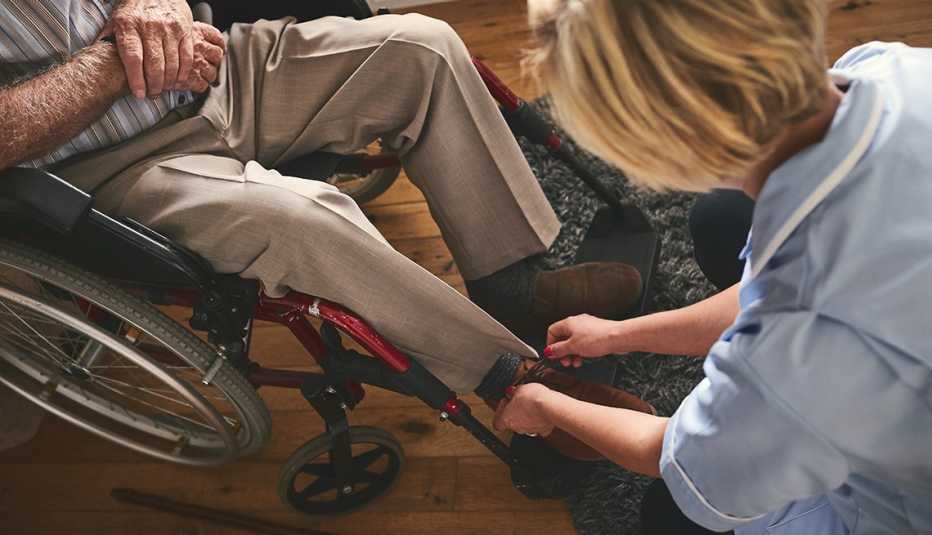AARP Hearing Center


While no two family caregivers face the same day-to-day issues, one universal strain remains: the inherent challenge of assisting loved ones who can't dress themselves.
At a time in life when independence may feel like it’s being stripped away bit by bit — be it around driving, work or self-care — there’s a particular indignity that comes with being unable to slip on a pair of pants or button a shirt. So it’s heartening to see an increasing number of designers and retailers offer a range of stylish clothing options commonly referred to as “adaptive wear.” These items run the gamut from easy-on shoes to attractive Velcro-closure pajamas.
Fostering independence, maintaining dignity
“One of our main goals in geriatrics is maintaining independence and supporting independence. So having adaptive clothing that allows someone to be able to maintain that ability to dress themselves, without needing assistance or maybe with modified assistance, is an absolute goal and also game-changing for people,” says Lisa Walke, chief of the Division of Geriatric Medicine at the Hospital of the University of Pennsylvania. For caregivers, Walke says, who already have so much on their plates, adaptive clothing gives them a sense of ease, convenience and comfort.
With mainstream brands such as Tommy Hilfiger and Target increasingly offering adaptive wear, there’s also been a decrease in the stigma around modified clothing. “[In the past], adaptive wear was one of two things — either institutional, or completely custom and very expensive. Now we’re moving past that … with options that people would be excited about wearing,” says Allison M. Kabel, an associate professor of health sciences at Towson University in Maryland, whose research has explored the factors that shape one’s sense of dignity. She has also seen a financial benefit to mainstream brands offering wares that benefit folks with dressing challenges. “Inclusive design is often offered at a lower price point because those [larger] companies have the economy of scale going for them on the manufacturing side,” Kabel explains.
On top of fostering dignity, offering clothing for differently abled adults is also smart business considering that, according to the December 2022 report from the National Center for Health Statistics, among residential care communities in the U.S. alone, anywhere from 46 to 62 percent of residents need assistance dressing.


































































More on caregiving
How Family Caregivers Can Help When Personal Hygiene Is a Problem
Assisting a loved one with showering, toileting and other intimate tasks takes finesse, know-how
11 Housing Options for Those Who Can’t Age in Place
Older adults want to stay in their homes but can’t always
How Technology Can Improve Caregiving
New products allow for more treatment, testing and monitoring from home